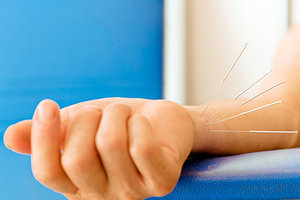Q: I heard that ICD-10 codes were updated in October. Is this changing all the codes, and what changes do I need to make as a licensed acupuncturist, if any?
These updated codes were effective Oct. 1, 2016 and just like when ICD-10 first transitioned, the date of service determines the codes. If the date of service was Sept. 30, 2016 or earlier, use the past codes, but for services on or after Oct. 1, 2016, the new codes are required. Do not combine a single claim form with an old and new code; send them separately.
To date, there are 1,974 new ICD-10-CM codes proposed for the 2017 ICD-10 release (note the effective date is Oct. 1, 2016). Of that number, there are 313 deletions and 351 revised codes. Although there are a lot of changes, the following are the most likely to affect acupuncture providers.
Some new and updated codes for pain include, pain in joints of the hands: M25.541 pain in joints of right hand, M25.542 pain in joints of left hand, and M25.549 pain in joints of unspecified hand. There also new codes for testicular, scrotal or male genital organ pain; and updates for the coding of dyspareunia.
 While acupuncture is essentially reimbursed for pain management, often a code that is the cause of pain is more appropriate and distinct, and these codes assume pain as an inherent manifestation.
While acupuncture is essentially reimbursed for pain management, often a code that is the cause of pain is more appropriate and distinct, and these codes assume pain as an inherent manifestation.
For instance, Cigna will pay an acupuncturist for pain in the cervical spine and will also reimburse for specific conditions in the cervical spine, or at least those that manifest pain, such as cervical disc conditions. Certainly there is a greater level of need and length of care for a cervical disc diagnosis than simple cervical pain. So, while some acupuncturists may never wish to code a disc condition, it may be in many instances the more appropriate and distinct code. With that in mind, there were several updates to cervical disc coding.
For cervical spine disc codes, there is further specificity of disc level for mid-cervical spine. Instead of one code for mid-cervical disc displacement, M50.22, there are now specific codes for each disc, C4-5, C5-6 and C6-7. For instance, for disc displacement of mid-cervical spine there is now M50.221 other cervical disc displacement at C4-C5 level, M50.222 other cervical disc displacement at C5-C6 level, M50.223 other cervical disc displacement at C6-C7 level, and M50.220 other cervical disc displacement unspecified level.
This same type of code distinction appears for all cervical spine disc codes, including disc disorder with myelopathy, disc disorder with radiculopathy, disc displacement, disc degeneration, other disc disorders, and unspecified disc disorders. This alone adds 24 new codes and deletes six codes.
Codes for TMJ disorders and jaw sprain were also completely updated and changed in order to identify the condition as right, left or bilateral. Furthermore, there are new codes for bilateral extremity nerve lesions, such as carpal or tarsal tunnel syndrome, lesion of radial, median, sciatic, femoral, popliteal, plantar nerves, mononeuropathies and causalgia.
There are also new codes for bunions and bunionettes, as well as an update to coding for "post-procedural status" which is the code for post-surgical issues, such as pain or other related dysfunction. That new code is Z98.890.
Other updates that may be of importance to an acupuncture provider include depression, mood disorders, and compulsive behaviors including eating disorders. Codes for cholesterolemia, colitis, gluten sensitivity (non-celiac), tinnitus and sarcopenia are also available.
When the codes first transitioned to ICD-10, it did not lead to the nonpayment of claims or a national panic. It simply was an updated form of communication to best describe the condition being treated. The better and more detailed description will always lead to getting the appropriate levels of care allowed and paid. The same is true for these 2016 updates and changes.
If you would like a list of the common codes for acupuncture and/or the complete list of code changes, please send your request to .
Click here for more information about Samuel A. Collins.




